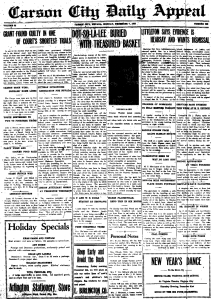Earlier this week, officials in Baltimore opened a 200-year-old time capsule buried in a cornerstone of the city’s Washington Monument.
Rather unremarkable, except …
Inside the time capsule were some hand-blown bottles, a plaque and four newspapers. The newspapers, it was said, were in ‘remarkably good shape.’
In other words, the people who opened the capsule could pick them up, read them and have a historical snapshot of the day they were buried two centuries ago.
 Imagine, though, if the time capsule had been sealed away just 30 years ago and someone had decided to preserve history using the latest technology of the day. The history it contained likely would be unreadable today.
Imagine, though, if the time capsule had been sealed away just 30 years ago and someone had decided to preserve history using the latest technology of the day. The history it contained likely would be unreadable today.
The medium possibly would have been a floppy disk. The people who found it would have had no idea what was on it, and they would have struggled to find a disk drive that would connect with a computer from that era that would have a compatible word-processing program to read whatever was on the disk.
Ultimately, assuming they could accomplish all that, they probably would have printed out the information on a piece of paper because it would be easier than trying to connect the computer to a 21st-century device.
Now imagine the capsule was buried only 20 years ago. What if the history in the capsule, instead of a newspaper or a floppy disk, had been simply a URL to a World Wide Web site containing all the background on the ceremony and the news events of the day.
Would that web site still be available today? If it were not — and chances are very good it wouldn’t, as the average life expectancy of any URL is less than 100 days — the capsule would be about as useful as Al Capone’s vault.
Let’s leap ahead 200 years for the opening of a time capsule buried today. I hope they wouldn’t rely on a thumb drive, or a DVD, or some kind of electronic device with a message to future generations to CLICK HERE to find out what this was all about. I’d hope they include a newspaper.
A few years ago, while I was testifying about the need to publish public notices in newspapers, a member of the Nevada Assembly looked at me over his microphone and asked:
‘Why would we preserve notices in newspapers, which can degrade and disappear over time? They don’t last forever. The internet is forever.’
The internet is fast, accessible to most of the population, convenient and a vast resource. It is not forever.
Granted, newspapers are not forever, either. Neither is microfilm. Perhaps the closest we have to forever is the Chauvet Cave paintings, dating to perhaps 30,000 years ago.
I’m not trying to be a Luddite. The NPA and most state press associations for years have been posting notices to statewide websites for access and convenience.
My point then and now is that the web can’t be the only place those notices are published. And beyond that, I believe we’re potentially creating a hole in our history because of the massive, overwhelming amount of information being published on the web today that will simply be inaccessible to future generations.
Think of all that stuff you wrote on the first computer you ever owned. Where is it?
And when some archaeologist digs up the ruins of our civilization — or workmen simply open a time capsule in 2215 — which artifacts will be sent to a museum and which will be tossed on the trash heap?
 Nevada Press Association The best in Nevada journalism since 1924
Nevada Press Association The best in Nevada journalism since 1924


